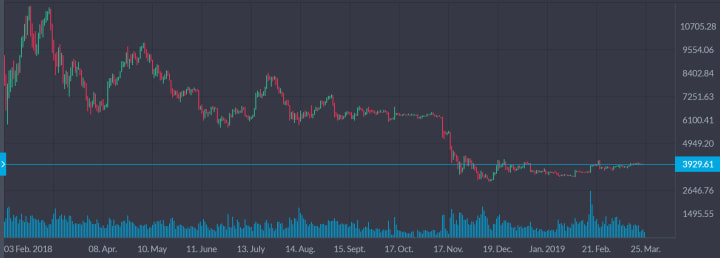The Curse of Coins
Blockchain has some promising applications, but not as a mainstream currency.

Bitcoin's HODLers or ‘maximalists’ deserve a lot of the criticism they receive, but they’re right on an important point — a blockchain-based medium of exchange could fully undermine a national currency, and sometime soon.
People would need a pressing reason to switch — a teetering regime, say, with a predatory financial infrastructure — as well as ubiquitous internet access. And while those are negatively correlated, I’d say there’s a “goldilocks zone” in which a monetary rebellion could and probably will occur.
But as we know from his old web forum posts, Satoshi Nakamoto didn’t build the Bitcoin system just to inconvenience a dictatorship or two. He (they?) did it to dethrone national fiat currencies and established financial institutions wholesale by introducing an asset with all the upsides of a dollar or yuan, without the downsides.
The unique selling point of a cryptocurrency has always been its ability to combine, in a single asset, the major advantage of physical cash — its status as a bearer instrument, requiring no user identification — with the immediate transferability of bank deposits. Bitcoin’s value, which largely hinges on network effects, will endure for as long as there are institutions whose radar people will pay to slip under.
It’s impossible to make a reasonable projection as to where the price will be a decade from now. It might never return to the heady days of mid-December 2017, or as Niall Ferguson pointed out recently: If every millionaire in the world were to shift just one percent of their assets into Bitcoin, it would jump to $60,000. It’s this unique uncertainty that gives fully-decentralized currencies their anarchic appeal.
But unfortunately, this is also their Achilles heel.
Why? Because, in shedding the downsides of a centralized fiat currency, cryptos also shed one of their major upsides: Price stability in terms of real goods.
Back when national currencies were pegged to gold and silver, the more-or-less stable supply of a precious metal acted as a decent price anchor. When these systems came under immense strain in the early 1930s, most Western governments either reorganized their metal pegs, or rescinded them altogether.
Money, like language, is one of civilization’s basic social technologies. Attaching its value to the planet’s mineable shiny metal reserves — or 21 million credits in a ledger network — seems like a very strange way to run an economy.
Arbitrary sources of supply are preferable to the whims of a tin-pot dictator with a printing press, but compared to an independent committee of monetary economists with the entirety of the world’s financial data at their fingertips, a commodity-peg starts to look a little wacky.
And that’s why governments no longer choose to operate with one of their two hands, monetary policy, tied behind their back. But there is still a price anchor, a far better one in fact — a team of basically informed, basically alert policymakers, who can and usually will do whatever they need to do to keep the value of the currency stable in terms of some external price index, by buying and selling assets — and printing and un-printing reserve balances. So, what exactly is Bitcoin’s price anchor?
The basic answer is that it doesn’t have one, and never will.
See, in eliminating an active supplier from the equation, what Nakamoto did was make market demand all-powerful. The sheer level of volatility which decentralization bakes in — both on a daily basis, and with the occasional giant swing, like the 80 percent one-day drop back in 2013 — means that neither Bitcoin, nor any of the alt-coins, will tick the box that every monetary asset has to tick: Reliability as a store of value.
The market has calmed considerably in the last year as bearish headwinds had day traders losing interest, but the potential for huge swings isn’t going away anytime soon. That potential alone is enough to bar it from the adult’s table of international currencies.

BTC/USD price
So, discussing the implications of decentralized crypto-assets for taxation or monetary policy, as many now are, is a neat intellectual curiosity, but that’s all it is. Whatever their value 10 years from now, it will have changed substantially a month later, and ‘cryptocurrency’ will still be an oxymoron.
Who knows, maybe they’ll carve out a real niche for themselves in stable financial systems, perhaps replacing gold as the standard inflation hedge. It won’t be as the standard monetary unit. Sure, central banks may employ some form of blockchain technology one day, but then it’s not truly decentralized, and wasn't that the whole point?
About the Creator
Alex Hughes
Econ graduate and international relations Masters student, with an interest in economics, international politics, meta-ethics and lots of other equally boring topics






Comments
There are no comments for this story
Be the first to respond and start the conversation.